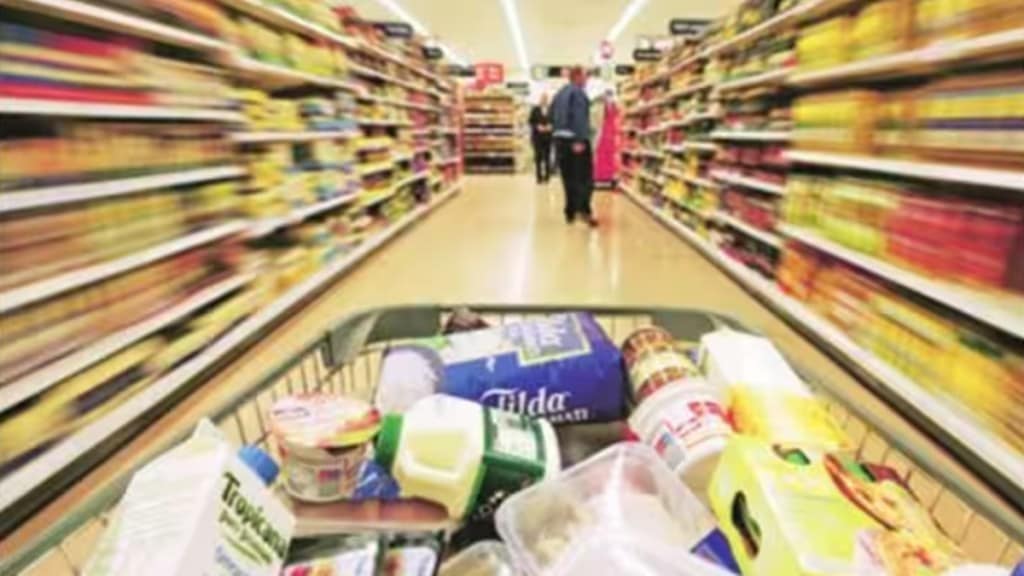The consumer goods companies posted weak performance during the July-September quarter of FY24. According to brokerage firms, the impact on sales growth of the sector during the period was largely due to the delayed festive season and from the price-hike anniversarization. While the overall consumer goods segment reported strong earning growth in the second quarter, it was largely led by margin expansion off a low base. “Reported earning growth remained strong in Q2, albeit this was largely led by margin expansion off a low base. Demand trends remain sluggish, which is further exacerbated by increase in competitive pressures especially from smaller players. Our staples coverage (excl. ITC/ VBL) saw 16 per cent EPS growth (2Y: 10 per cent CAGR). Five out of 11 companies beat estimates, while others were mostly in-line,” said a report by Jefferies. Also, gross margins made a smart recovery but competition picked-up too which warranted a rise in advertisement and promotional spends. Ebitda growth still was a strong 16 per cent YoY.
Analysts said that consumer goods companies’ performance during Q2 was a mirror image of Q1FY24 performance as double-digit PAT growth was largely driven by margin expansion, while revenue growth stood in low single digits due to muted volume growth. Experts at Sharekhan by BNP Paribas said, “Value growth of most of the companies under coverage lagged volume growth as price cuts undertaken by companies led to lower realization growth. Overall, Sharekhan’s consumer goods revenues grew in mid-single digits during the quarter. 12 out of 19 companies registered single-digit revenue growth. With benign input prices, gross margins of most companies under coverage remained high during the quarter. This also aided in OPM expansion and double-digit PAT growth.”
“Most companies under coverage registered over 200 bps YoY OPM expansion. This is despite the companies making higher investments in advertisement and promotional activities. Strong expansion in the OPM aided companies to achieve double digit PAT growth despite muted revenue growth. Sharekhan’s consumer universe witnessed 17 per cent YoY PAT growth,” Sharekhan report said.
Flat volume growth
Volume growth, which stood flat to low single digit for most companies, was impacted by slowdown in rural markets. Further, per the analysis by brokerage firms, it was another quarter of small consumer goods companies outperforming large packs with higher volume growth (led by distribution expansion and share gains) and margin expansion aiding strong PAT growth. Meanwhile, Jefferies report added, “Volume pick-up remains elusive for our coverage, with Q2 seeing a slight QoQ volume slowdown (2 per cent vs. 4 per cent in Q1). This was partly attributable to factors such as erratic rains and delayed festive, apart from weak demand and higher competition. Improvement in rural seen in Q1 was dampened by a weak monsoon (esp. in August) and a transient spike in food prices.”
Sharekhan by BNP Paribas also added, “Irregular monsoon and high inflation continued to impact the consumer sentiments in rural India. Weak rural demand continued to put pressure on the sales volume of consumer goods companies. Most large companies under our coverage registered flat to mid-single digit volume growth (lower than street expectation), while small companies benefited from distribution expansion and market share gains aiding them to achieve higher volume growth compared with large peers. Impact of price cuts was fully effective in Q2 resulting in lower value growth for most companies under our coverage.”
While the raw material headwinds started easing, competition from smaller and regional players, and media intensity has gone up across categories. “Coverage ad-spends jumped sharply QoQ, and are almost back to pre-inflation period. Nonetheless, coverage Ebitda margin improved QoQ and YoY led by GM up-tick. Resultant Ebitda growth for our coverage was healthy, at 16 per cent YoY – slightly better than estimates. Except HUL and ITC, Ebitda growth was in double-digits across our coverage,” stated Jefferies. GM recovery continued in Q2 and was ahead of estimates, as input prices turn benign across most commodities.
In terms of categories, Jefferies said that divergence continued across urban-skewed premium categories and mass. “Detergents, packaged foods, cosmetics, cigarettes, dishwash, air care etc. continue to do well. CSD made a sharp comeback after a weak season. Edible oils and soaps saw modest volume growth (low-single digits) but were impacted by sharp price reductions. Erratic monsoon impacted HI, while juices saw a shift in loading due to delayed festive,” it added.
Going forward
Companies, however, have remained optimistic of better volume trends during the festive season and have highlighted a slight pick-up in consumer sentiment towards the second half of September. “Revenue growth however should remain muted, given limited pricing growth. While GM should trend well, higher ad-spends and volume focus from companies would cap near-term Ebitda margin upside, in our view,” Jefferies said.

